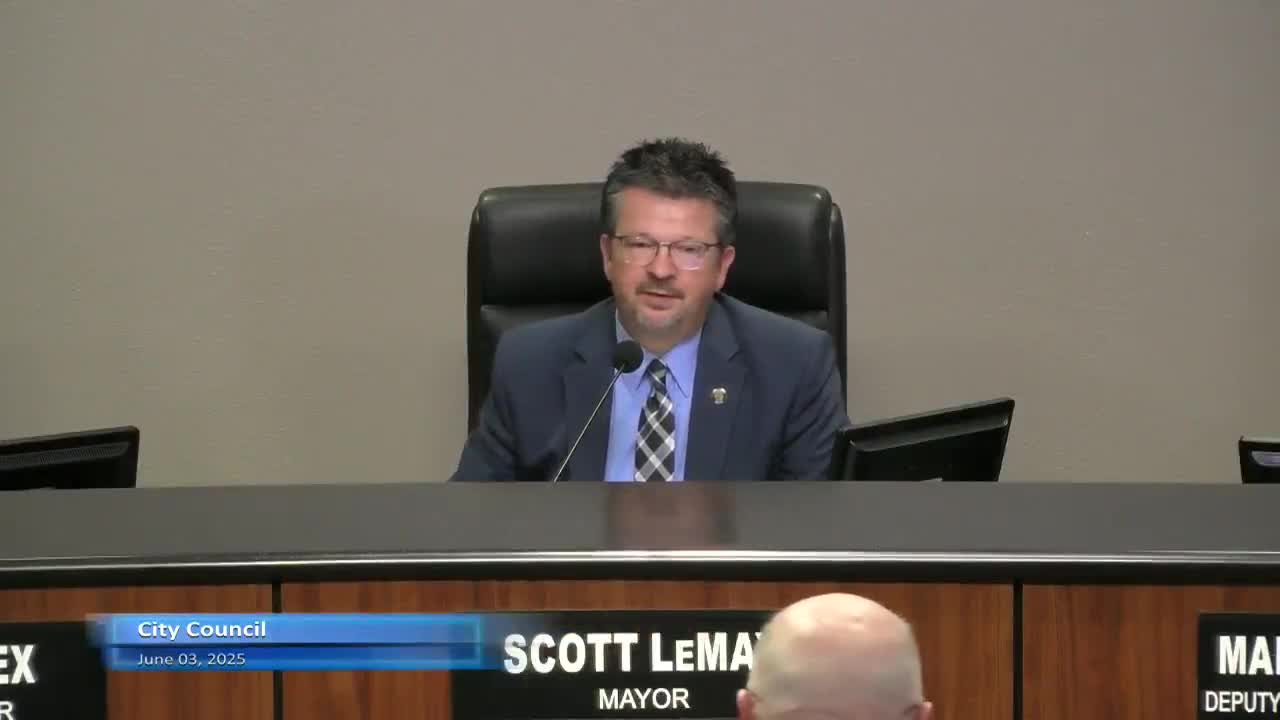Dallas City Council Faces Zoning Concerns for CarMax and AMF Bowling Center
June 03, 2025 | Garland, Dallas County, Texas
This article was created by AI summarizing key points discussed. AI makes mistakes, so for full details and context, please refer to the video of the full meeting. Please report any errors so we can fix them. Report an error »

In the heart of Garland's city hall, a spirited discussion unfolded as residents and business representatives gathered to voice their concerns over proposed zoning changes that could reshape the community. The atmosphere was charged with a mix of apprehension and hope, as speakers took turns addressing the city council about the implications of these changes on local businesses and neighborhoods.
Carl Crowley, a newcomer to Garland, raised a critical question that echoed throughout the meeting: "What's the rush?" His inquiry highlighted a growing unease among residents regarding the speed of the proposed zoning adjustments. Crowley pointed out that the city owns approximately 50 acres of prime development land, which could serve as a catalyst for future growth without displacing existing businesses. He reminisced about past attempts to develop the area, emphasizing the importance of thoughtful planning over hasty decisions.
As the discussion progressed, the potential impact on existing businesses became a focal point. Crowley noted that many local establishments, including grocery stores and drive-thru restaurants, would be classified as nonconforming under the new regulations. This designation could hinder their ability to secure financing for necessary improvements, such as roof repairs, due to banks' reluctance to lend to nonconforming businesses. The implications were clear: the proposed changes could stifle the growth and sustainability of local enterprises.
Christopher Bowers, an attorney representing prominent businesses like AMF Bowling Centers and CarMax, echoed these concerns. He warned that the new architectural standards could further complicate matters for businesses already facing challenges. Bowers argued that the proposed regulations could diminish property values and create barriers for companies looking to invest in Garland. He urged the council to reconsider the zoning changes, advocating for a more accommodating approach that would allow businesses to thrive.
The meeting also touched on the legal aspects of the proposed changes, with Bowers reminding the council that state law restricts the imposition of design standards unless an area is deemed historically or architecturally significant. This raised questions about the appropriateness of the proposed regulations in Garland, a city striving to balance growth with community needs.
As the evening drew to a close, the council members were left to ponder the weight of the discussions. The voices of residents and business owners resonated in the chamber, a reminder of the delicate balance between development and community preservation. With the future of Garland hanging in the balance, the council's next steps will be crucial in determining the city's trajectory and the well-being of its residents.
Carl Crowley, a newcomer to Garland, raised a critical question that echoed throughout the meeting: "What's the rush?" His inquiry highlighted a growing unease among residents regarding the speed of the proposed zoning adjustments. Crowley pointed out that the city owns approximately 50 acres of prime development land, which could serve as a catalyst for future growth without displacing existing businesses. He reminisced about past attempts to develop the area, emphasizing the importance of thoughtful planning over hasty decisions.
As the discussion progressed, the potential impact on existing businesses became a focal point. Crowley noted that many local establishments, including grocery stores and drive-thru restaurants, would be classified as nonconforming under the new regulations. This designation could hinder their ability to secure financing for necessary improvements, such as roof repairs, due to banks' reluctance to lend to nonconforming businesses. The implications were clear: the proposed changes could stifle the growth and sustainability of local enterprises.
Christopher Bowers, an attorney representing prominent businesses like AMF Bowling Centers and CarMax, echoed these concerns. He warned that the new architectural standards could further complicate matters for businesses already facing challenges. Bowers argued that the proposed regulations could diminish property values and create barriers for companies looking to invest in Garland. He urged the council to reconsider the zoning changes, advocating for a more accommodating approach that would allow businesses to thrive.
The meeting also touched on the legal aspects of the proposed changes, with Bowers reminding the council that state law restricts the imposition of design standards unless an area is deemed historically or architecturally significant. This raised questions about the appropriateness of the proposed regulations in Garland, a city striving to balance growth with community needs.
As the evening drew to a close, the council members were left to ponder the weight of the discussions. The voices of residents and business owners resonated in the chamber, a reminder of the delicate balance between development and community preservation. With the future of Garland hanging in the balance, the council's next steps will be crucial in determining the city's trajectory and the well-being of its residents.
View full meeting
This article is based on a recent meeting—watch the full video and explore the complete transcript for deeper insights into the discussion.
View full meeting
